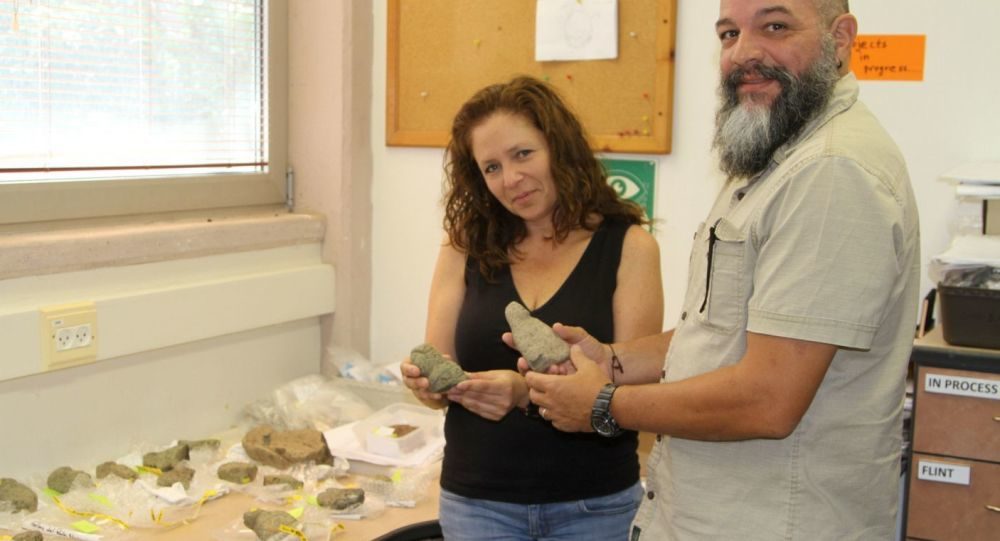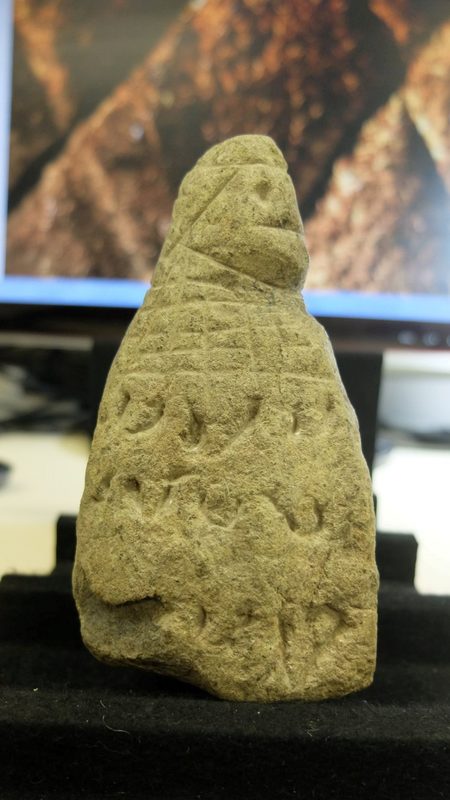
© HAIFA UNIVERSITY
The statuettes
are nothing like any stone art objects previously found in the Caribbean region, and the inscriptions on them do not bear resemblance to known writing systems.Archaeologists have come one step closer towards resolving the mystery of a trove of Puerto Rican figurines that could put scientists on the trail of a previously-unknown civilisation.
The artefacts were
discovered by a Puerto Rican priest named José María Nazario in the late 1870s. He claimed to have learned about them from a dying local woman, who said her family had been guarding the stash in a mountain tunnel for centuries.

© HAIFA UNIVERSITYOne of the Puerto Rico statuettes researched by University of Haifa
Initially there were
nearly 800 carved stone figurines, but some of them later landed in private collections and museums. Their function was unclear, and so was their origin.
The statuettes - some of them anthropomorphic and some resembling ritual artefacts - have markings that apparently do not belong to any known writing system, although there were suggestions the symbols looked similar to the ancient Middle Eastern languages of Sumer and Phoenicia.
The authenticity of the discovery has been a subject of controversy, and a theory emerged that the figurines - or at least part of them -
were a forgery.
But in 2001, Reniel Rodríguez Ramos, then a research student, spotted the stones and decided to unravel their story.
He reached out to Dr Iris Groman-Yaroslavsky, who has examined some of the figurines at her Use-Wear Analysis Laboratory at the University of Haifa.
Analysis has shown remnants of gold coating and red paint on some of the items, backing up the theory that they were used in rituals.
"This is definitely one of the strangest and most fascinating stories I've been involved in", she said,
as quoted by the Jewish Press. "To date, we have not found any similar carved stone art objects from this region of America, and this is why many researchers assumed that they must be fake. However, the
microscopic tests we performed show beyond any doubt that the stones were carved around 600 years ago".
However, in a separate
statement to
Haaretz,
Groman-Yaroslavsky said they were even older and dated somewhere between 900 B.C. and 900 A.D., before the European conquest but some 3,500 after the territory was first populated.
Rodríguez Ramos did not dare to tout the stones as
traces of a lost civilisation, but still said they were different from other artefacts found in the region.
"They were made in a different way", he said. "For me, when I look at them... I immediately say, different. I cannot say lost civilisation but I can say: The hands that made these are different from the hands that made artefacts in Puerto Rico".
He is next going to talk to an expert on ancient writing systems of pre-Columbian America.
Comment: See also: